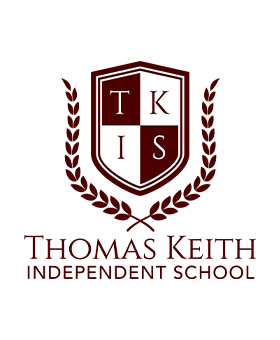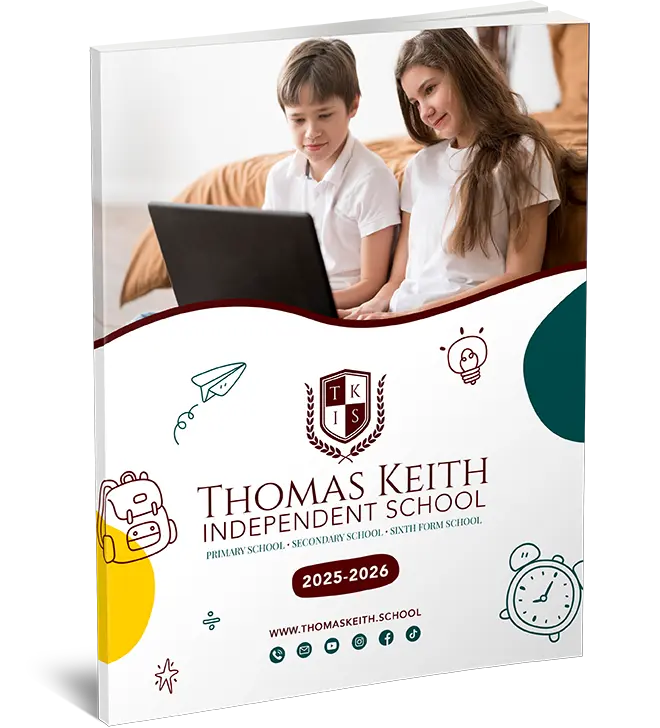Homeschooling and the Arts: Cultivating Creativity at Home
Introduction to Homeschooling and the Arts
Homeschooling and the Arts: Cultivating Creativity at Home presents a unique opportunity for families to tailor an educational experience that emphasises artistic development alongside traditional academic pursuits.
At Thomas Keith Independent School, we understand that the integration of arts in education can play a pivotal role in nurturing creativity, which is vital for cognitive growth and emotional well-being.
The prominence of arts in a homeschool curriculum allows for a more adaptive learning environment, accommodating individual interests and fostering an imagination that might be restricted in conventional schooling.
When children are given the freedom to explore subjects such as drawing, painting, and music within their home setting, they often develop a profound sense of self-discovery.
This personal journey of artistic exploration is not merely about producing a tangible piece of art; it is a medium through which children learn to express their thoughts and emotions.
Implementing a creative curriculum helps homeschoolers to break away from the rigidity of traditional educational frameworks, enabling a more holistic approach to learning.
Homeschooling parents often find that the arts can serve as a strong conduit for teaching other core subjects as well.
For instance, when children engage with artistic projects, they inadvertently enhance their skills in areas like critical thinking, problem-solving, and innovation.
By integrating the arts into the homeschool environment, parents can create a stimulating atmosphere that encourages exploration and cultivates a lifelong appreciation for artistic endeavours.
Furthermore, this approach introduces learners to different cultures and histories, enriching their global awareness and understanding.
In today’s world, where creativity and artistic ability are celebrated in diverse fields, homeschooling that emphasises the arts prepares students to navigate an ever-changing landscape with confidence.
At Thomas Keith Independent School, our commitment to enhancing artistic education means providing resources and expert guidance to ensure each learner can flourish in their artistic pursuits.
In essence, Homeschooling and the Arts: Cultivating Creativity at Home not only broadens educational horizons but also prepares students for a fulfilling and adaptable future.
The Importance of Creativity in Education
Homeschooling and the Arts: Cultivating Creativity at Home is an essential focus for educational success in today’s dynamic world.
Creative education plays a significant role in fostering critical thinking, problem-solving skills, and emotional development among students.
Incorporating creativity into the curriculum cultivates an environment where children can explore their artistic abilities, allowing them to engage more deeply with their learning experiences.
One of the primary benefits of nurturing creativity in education is the enhancement of problem-solving abilities.
Creative projects encourage students to approach challenges from different angles, developing innovative solutions that might not be evident in traditional learning scenarios.
This creative thinking skillset is not only beneficial in artistic endeavours but also translates to various fields and subjects, making students more versatile thinkers.
Another important aspect of creativity in education is its impact on student engagement and motivation.
When students are given the opportunity to express themselves through artistic mediums, such as drawing, painting, or music, they often become more interested in the subject matter.
This interest can lead to increased academic performance as students associate learning with a positive and fulfilling experience.
Furthermore, creativity in education supports emotional development and well-being.
Through creative activities, students can express their emotions and experiences in a safe and supportive environment.
This expression fosters self-awareness and confidence as students realise their potential to create and affect change in their world.
In addition to fostering emotional intelligence, creativity encourages students to develop interpersonal skills.
Collaborative creative projects cultivate team-working abilities as students learn to communicate their ideas effectively and understand diverse perspectives.
These skills are crucial in preparing students for the demands of the modern workforce, where collaboration and communication are often key to success.
Understanding the importance of creativity in education also involves recognising its influence on lifelong learning.
Creativity instils a love for learning by promoting curiosity and exploration.
Students who are encouraged to pursue their passions and interests are more likely to continue learning throughout their lives, adapting to the ever-changing demands of the professional landscape.
At Thomas Keith Independent School, we are committed to integrating Homeschooling and the Arts: Cultivating Creativity at Home into our curriculum.
By prioritising creative education, we aim to equip students with the skills necessary to thrive in both academic and personal pursuits.
Creative education not only makes learning enjoyable but also prepares students to become innovative thinkers, ready to tackle future challenges with confidence and creativity.
Incorporating Art into Homeschool Curriculum
Homeschooling and the Arts: Cultivating Creativity at Home is an innovative approach that enhances the educational journey for children by integrating artistic elements into the learning process.
Incorporating art into a homeschool curriculum is not just about adding creativity; it is about fostering a comprehensive educational experience that nurtures a child’s imagination and intellectual growth.
Artistic expression is a crucial component in developing a child’s cognitive abilities.
Through drawing, painting, and other forms of art, children learn to express their thoughts and emotions, which can enhance self-awareness and emotional intelligence.
Homeschooling provides the flexibility to tailor art lessons that suit the interests and artistic ability of each student, making the learning experience unique and personal.
It is essential to incorporate a variety of artistic mediums into the homeschool curriculum.
Painting and drawing can improve hand-eye coordination and fine motor skills, while activities like sculpture and pottery can boost spatial awareness and problem-solving abilities.
Including art history and appreciation in the curriculum can also provide a broader cultural perspective, enabling students to understand the significant impact of art throughout history and across different societies.
To ensure that art plays a significant role within homeschooling, parents can create dedicated time blocks for creative activities.
This structured yet flexible scheduling allows for an immersive experience that encourages innovation and original thinking.
Additionally, integrating art projects with other subjects can enhance learning; for instance, students might create historical artefacts in conjunction with history lessons or design gardens as part of a biology project.
At Thomas Keith Independent School, we recognise the value of cultivating creativity alongside traditional academic subjects.
We provide resources and guidance to help parents effectively integrate the arts into their homeschooling efforts.
In conclusion, incorporating art into a homeschool curriculum is a strategic means of enriching a child’s education.
By prioritising creativity, we can cultivate a well-rounded learning environment that empowers students to pursue their passions and explore the full extent of their abilities.
This holistic approach to homeschooling not only prepares them academically but also equips them with the creative skills necessary to navigate and contribute to the world around them.
![]()
Benefits of Artistic Expression for Children
Homeschooling and the Arts: Cultivating Creativity at Home has numerous benefits, especially in fostering artistic expression for children.
Artistic expression serves as a powerful tool for developing a child’s cognitive abilities and emotional intelligence.
When children engage in artistic activities, they are not only exploring their creativity but also enhancing their ability to communicate feelings and thoughts.
Art provides a sensory-rich experience that contributes to brain development, especially in areas related to critical thinking and problem-solving.
Engaging in artistic endeavours allows children to experiment with different mediums, from paint and drawing to sculpture and digital art.
This exploration is crucial in cultivating a child’s imagination and creativity, which are essential for success in various fields beyond the arts.
Moreover, artistic expression is a means of stress relief and emotional regulation.
Children often find solace in activities that allow them to express themselves freely, leading to improved mental well-being.
Homeschooling scenarios can particularly benefit from incorporating the arts as they offer a flexible environment for children to pursue their interests.
The personalised nature of homeschooling means children can spend ample time exploring art, thereby understanding themselves and the world better.
Additionally, artistic expression fosters patience and perseverance.
Creating art requires dedication, and by engaging in the process, children learn the value of practice and improvement.
Finally, art can encourage collaboration and social skills, as children often work together on projects, share ideas, and critique each other’s work in constructive ways.
In the context of Homeschooling and the Arts: Cultivating Creativity at Home, such skills can significantly enhance a child’s development, preparing them for future challenges and opportunities.
Practical Tips for Cultivating Creativity at Home
Homeschooling and the Arts: Cultivating Creativity at Home offers an unparalleled opportunity to foster artistic skills and creative thinking in children.
At Thomas Keith Independent School, we understand the importance of developing a creative learning environment which can significantly enhance educational outcomes.
A practical tip for cultivating creativity at home is to create a dedicated art space.
This doesn’t have to be an entire room; a small corner with a table and supplies can suffice.
Having a designated space encourages children to engage with art without boundaries, allowing them the freedom to express their imagination regularly.
Ensuring that this environment is rich in artistic supplies such as paper, pencils, paints, and brushes can stimulate creativity and inspire artistic expression.
Integrating routine art activities is another effective method.
Setting aside a regular time each day or week for creative projects can help establish a rhythm and expectation around artistic endeavours.
This could include activities like drawing, painting, or even storytelling through art.
By making artistic expression a seamless part of the daily or weekly routine, children are more likely to view creativity as an integral part of learning.
Using multimedia resources can also enrich the homeschooling experience.
Online platforms offering art tutorials and creative workshops can provide inspiration and instruction, expanding the types of artistic activities children can explore.
Resources such as video lessons or interactive art software can inject excitement and modernity into the art curriculum.
Engaging the whole family in art projects is another excellent strategy.
Family art sessions can foster a collaborative and supportive creative atmosphere.
Such activities encourage sharing of ideas, providing a platform for children to learn from each other, while parents can guide and participate without overshadowing the child’s own creativity.
Incorporating art into other subjects is also a powerful approach.
Encouraging drawing or creative writing assignments in subjects like history or science can link artistic skills with academic learning.
This not only boosts engagement but also helps children synthesise information creatively.
Lastly, emphasise the process over the final product.
Celebrating effort, techniques learnt, and personal growth can encourage persistence and a love for creative exploration.
Focusing on the joy and learning that comes from artistic practice can cultivate a resilient and innovative mindset.
In conclusion, Homeschooling and the Arts: Cultivating Creativity at Home can be achieved through intentional space creation, routine activities, multimedia resources, family involvement, integrated learning, and an emphasis on the creative process.
These practical tips are designed to help ensure that art and creativity can thrive within a homeschooling environment, providing children with the skills to succeed across a broad spectrum of academic and personal pursuits.
Resources and Tools for Homeschool Art
In the context of Homeschooling and the Arts: Cultivating Creativity at Home, identifying the right resources and tools is essential for fostering artistic expression and creativity in children.
Providing access to diverse art materials transforms a homeschooling environment into a dynamic space that nurtures creativity.
An extensive array of supplies, such as paints, brushes, paper, pencils, and canvases, are foundational to any art-related homeschool curriculum.
These tools allow children to experiment with different mediums and techniques, enabling them to create beautiful illustrations and expressive pieces.
Online platforms offer a wealth of resources to complement traditional art supplies and lessons.
Websites like Masterpiece Society Studio provide structured art programs specifically designed for homeschoolers, offering video lessons that guide students through artistic projects.
These online resources are invaluable for both parents and students, providing step-by-step instructions and inspiration for creative endeavours.
Investing in memberships to such educational platforms can enhance the learning experience and deepen students’ understanding of art techniques.
In addition to online resources, books and publications focused on art education play a crucial role in enriching the homeschool art curriculum.
Classics like “Drawing on the Right Side of the Brain” by Betty Edwards offer insights into developing drawing skills, while texts on art history introduce children to influential artists and movements.
These books serve as both educational tools and sources of inspiration, potentially sparking a lifelong interest in art.
Incorporating technology into art education can further bolster creativity.
Tablets and graphic design software offer modern art tools that teach children digital illustration techniques.
Using technology in art projects broadens the scope of creative possibilities, allowing students to merge traditional and digital art forms.
Moreover, communities and networks dedicated to homeschooling art education provide invaluable support.
Joining forums and groups where families share ideas and resources can facilitate the exchange of experiences and insights, enhancing the overall learning journey.
In summary, an effective homeschool art curriculum relies on a combination of physical art supplies, digital tools, educational platforms, and community support.
Each resource contributes uniquely to the goal of successfully integrating creativity into homeschool education, empowering students at Thomas Keith Independent School to explore their artistic talents fully.
By strategically choosing and utilising these resources, homeschooling families can cultivate an environment where creativity thrives and education truly embraces the arts.
Success Stories: Homeschooling Families and Art
Homeschooling and the Arts: Cultivating Creativity at Home has led to numerous success stories among homeschooling families who have leveraged art to enhance their children’s education.
These families have discovered the profound impact of integrating artistic expression in their homeschool curriculum.
By incorporating creativity in their daily routine, they have cultivated environments where children can thrive both academically and artistically.
One success story involves a family who utilised art to teach history.
They managed to make ancient civilisations come alive through drawing and painting, jumping beyond traditional textbook learning.
This innovative approach not only sparked their children’s interest in history but also developed their artistic skills.
Another family integrated music and drama into their homeschooling schedule, encouraging their children to create and perform their own plays.
This hands-on method fostered teamwork, boosted their confidence, and honed their public speaking abilities.
Similarly, some homeschoolers have used art as therapy, which has notably benefited children with learning difficulties.
Incorporating different artistic mediums allowed these children to express themselves in ways that traditional education methods might not.
Such practices have shown significant improvements in focus, self-esteem, and overall mental well-being.
These success stories highlight the importance of creativity in homeschooling, reinforcing the idea that art plays a vital role in holistic education.
Thomas Keith Independent School recognises the potential of such creative approaches and aims to support families in continuing to cultivate creativity at home.
As homeschooling continues to evolve, stories like these demonstrate the benefits and opportunities that arise when artistic expression is interwoven with traditional education.
![]()
Conclusion: The Future of Arts in Homeschooling
Homeschooling and the Arts: Cultivating Creativity at Home offers a unique pathway to enhance creativity in education, envisioning a future where art plays a pivotal role in home-based learning.
As more families transition to homeschooling, the integration of arts into the curriculum demonstrates not only the versatility but also the transformative power of creative education.
The future of arts in homeschooling seems bright, with increasing recognition of the arts as a fundamental component of a well-rounded curriculum.
Technological advancements are playing a crucial role in the evolution of arts education within homeschooling environments.
Digital tools allow homeschoolers to access virtual art galleries, tutorials, and interactive platforms, facilitating a richer learning experience.
Such resources enable students to engage with art in a manner that is both innovative and accessible, ensuring that creativity remains at the forefront of their educational journey.
Thomas Keith Independent School recognises the importance of cultivating creativity at home and encourages the integration of arts education into homeschooling curricula.
This approach not only helps children to develop their artistic abilities but also nurtures critical thinking, emotional intelligence, and academic performance.
As educators and parents continue to embrace this model, the arts will undoubtedly maintain their role as a cornerstone of effective homeschooling.
In conclusion, the future of arts in homeschooling promises continuous growth, enriched by technological integration and deeper appreciation of creative learning.
This synergy between homeschooling and the arts ensures students are prepared for a complex world that values innovation, flexibility, and expressive capability.
The sustained focus on creativity in homeschool curricula will not only shape well-rounded individuals but also inspire a generation of thinkers ready to contribute to a dynamic global society.




